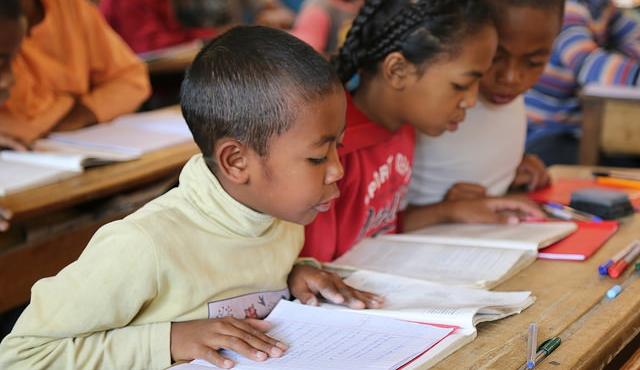
As the Fourth Meeting of the Global Alliance to Monitor Learning (GAML) gets underway in Madrid, the UNESCO Institute for Statistics (UIS) explores how best to measure functional literacy and numeracy.
750 million adults – including 102 million people between the ages of 15 and 24 – cannot even read or write a simple sentence, according to the UNESCO Institute for Statistics. This is one of our most widely cited figures, reported in just about every report and index related to sustainable development. Yet what do the data really tell us? The truth is these simple measures serve as a barometer – alerting us of the problem but offering little in the way of guidance to help governments and non-governmental organizations address an issue key to people’s survival and success in an increasingly digital world.
This is why GAML is spearheading a new measurement approach to support the achievement of Sustainable Development Goal 4 (SDG 4) on a quality education for all and its related target, 4.6: By 2030, ensure that all youth and a substantial proportion of adults, both men and women, achieve literacy and numeracy. Indicator 4.6.1 requires the measurement of the proportion of the population in a given age group achieving at least a fixed level of proficiency in functional (a) literacy and (b) numeracy skills, by sex.
Here, the key word is ‘functional’: the literacy and numeracy skills, combined, that people need as part of lifelong learning. While functional literacy and numeracy will mean different things in different countries and to different organizations, our own view is that they both involve a continuum of skills development that builds over time.
Going beyond the ability to read or write a simple sentence
UNESCO’s definition of literacy, for example, looks beyond the ability to read and write a simple sentence. We maintain that functional literacy is the ability to identify, understand, interpret, create, communicate and compute, using printed and written materials associated with varying contexts. It involves a continuum of learning that empowers people to achieve their goals, to develop their knowledge and potential, and to participate fully in their community and wider society.
Rather than being solely about the ability to understand the written information in front of you, functional literacy is about your ability to use that information as a way to communicate and to express yourself. To measure whether or not literacy is truly functional, therefore, it has to be measured at different levels of proficiency.
The challenge lies in creating a framework that captures or reflects the relevant skills needed to measure functional literacy and numeracy in different countries over time. Such a framework must reflect the current realities of countries at very different stages in terms of overall literacy and numeracy, as well as their expectations and aspirations in terms of future development. Only by measuring proficiency levels along a continuum can we gauge whether countries are moving closer to those aspirations.
PIAAC offers a good starting point
This is a key issue being discussed by the UIS with countries and assessment agencies at recent meetings in Hamburg and in Paris. They agreed that the OECD’s Programme for the International Assessment of Adult Competencies (PIAAC), one of the oldest and most experienced cross-national adult competencies assessments, provides a useful starting point. Its framework and background questionnaire covers a range of factors that influence the development and maintenance of skills, such as education, social background, engagement with literacy and numeracy as well as information and communication technologies.
The challenge lies to expand the PIAAC framework to better reflect the situation and needs of countries with lower levels of literacy and numeracy. This is the job of the UIS. We are looking at other assessments, such as the World Bank’s STEP Skills Measurement Program (STEP), UNESCO’s Literacy Assessment and Monitoring Programme (LAMP), and the Adult Literacy and Life Skills Survey (ALL), as well as national adult assessments in, for example, Bangladesh, Germany and Kenya. The aim is to extend the continuum of literacy and numeracy skills that will be captured in the framework. This will require work between various agencies and experts, moderated by UIS, to ensure that comparisons between assessments are reasonably valid.
Reflecting the different needs and aspirations of countries
In short, the aim is to ensure that every country can find its place in an extended continuum of skills. An added advantage of having a fully worked out continuum is that, despite the formal requirement of reporting on the proportion of the population in a given age group achieving at least a fixed level of proficiency, the proposed approach would allow countries to place their populations at different levels within a continuum, instead of the old “literate or illiterate” approach, and thus be better able to design and target programs and measure progress over time.
The next steps are clear. The PIAAC framework will serve as a base to extend the continuum to include the full range of skills – from basic to fundamental – covered by other assessments. We can then use the extended framework to map available tools and their coverage to identify the extent to which each one covers basic, medium and high-order skills. The third step will focus on providing a cost evaluation of current and alternative tools to help countries identify the most cost-effective approaches that are commensurate to their need to assess skills over time. The UIS, through GAML, will lead this work to support countries to measure and improve functional literacy and numeracy for lifelong learning.
Leave a comment